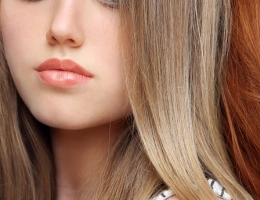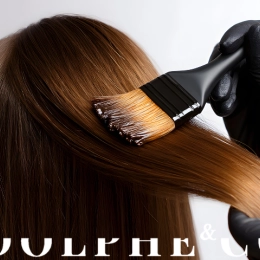Summer can be particularly tough on our hair. Between the sun, the sea, and pool chlorine, our hair undergoes numerous aggressions. UV rays degrade keratin, making hair dry and brittle, while salt and chlorine dry it out and dull its color. By the end of the summer, your locks may appear dull, dry, and damaged. Fortunately, several steps and treatments can effectively repair your hair. In this article, we will explore various techniques to bring your hair back to life.
Diagnosing Your Hair After Summer Analyzing the Damage
Before starting any treatment, it is essential to diagnose the condition of your hair to choose the most appropriate treatments. After a summer filled with sun and swimming, be on the lookout for signs of deterioration. Dry and brittle strands, loss of color and shine, split ends, and scalp irritation or dryness are all indicators of damaged hair. Identifying these signs will help you understand which areas need special attention and customize your care routine accordingly.
Identifying your hair type
Treatment largely depends on your hair type: fine, thick, curly, coily, etc. Fine hair, for example, is more likely to be weighed down by oil-rich products, while thick or coily hair may require more intense treatments to restore hydration. By correctly identifying your hair type, you can select the most suitable products and techniques to restore its health.
Moisturizing and Nourishing Care Using the Right Shampoos
Your dehydrated hair needs rich hydration and nutrition to regain vitality and shine. The first step is to choose a gentle, sulfate-free shampoo that cleanses without stripping. Look for formulas enriched with natural oils like argan oil, coconut oil, or avocado oil. These ingredients are known for their ability to deeply hydrate each strand, restoring softness and suppleness to damaged hair.
Adopting hair masks
Hair masks are valuable allies for regenerating the hair fiber. Enriched with keratin, shea butter, or silk proteins, they restore strength and elasticity to damaged hair. For optimal results, apply a hydrating mask once a week and leave it on for at least 20 minutes under a warm towel. The heat will allow the active ingredients to penetrate deeply, nourishing the hair and restoring its vitality.
Applying nourishing oils
Vegetable oils are perfect for sealing in moisture. Use a few drops of olive, jojoba, or castor oil on the ends and lengths to protect them from dryness. For even deeper care, you can apply an oil before bedtime and let it work overnight, then rinse in the morning. This practice, known as an "oil bath," is ideal for very dry or severely damaged hair.
Treating damaged ends trimming regularly
To treat and prevent split ends, certain practices are essential. Regular trims, every two to three months, help eliminate damaged ends and prevent split ends from moving up the hair shaft. This step, often neglected, is crucial for maintaining healthy, thick hair. Regularly trimming the ends ensures that your hair grows healthy, without breakage.
Protecting the Ends with Specific Serums
In addition to trimming, a reparative serum with ceramides or silicones can protect your ends and prevent breakage. Apply it daily to create a protective barrier against external aggressions. Serums not only nourish but also provide immediate shine, giving hair a silky and well-maintained appearance.
Caring for the Scalp Exfoliating the Scalp
The scalp, often overlooked, deserves special attention after a summer spent outdoors. A gentle scrub helps remove product residues, dead cells, and stimulates blood circulation, promoting hair growth. You can perform this scrub every two weeks for a healthy and revitalized scalp.
Moisturizing and Soothing
If your scalp is dry or irritated, opt for soothing lotions or tonics containing ingredients like aloe vera or chamomile. These natural actives are known for their calming and hydrating properties. They will soothe irritations while providing the necessary moisture to prevent itching and flaking.
Optimizing your daily hair care routine avoiding aggressive products
To maintain the benefits of previous treatments, adjust your daily hair care routine. Avoid overly harsh shampoos and opt for sulfate- and paraben-free products that are generally more respectful of the hair fiber. Sulfates, in particular, can dry out already weakened hair, so it is crucial to choose gentle products that won't worsen their condition.
Minimizing the Use of Heated Tools
Reduce the use of hairdryers, straighteners, and other heated tools, as these increase dryness and breakage. Instead, opt for air-drying or use thermal protectants before heat exposure. This minimizes damage while leaving you with naturally beautiful and healthy hair.
Detangling gently
Always use a wide-tooth comb or a special brush to detangle wet hair. Start from the ends and work your way up to the roots to limit breakage. Gentle detangling preserves the hair fiber and reduces the formation of knots, especially on already weakened hair.
Seeking professional treatments keratin-enriched salon treatments
In addition to at-home care, some professional treatments can be highly effective. A keratin treatment performed in a salon can restore strength and flexibility to your hair. This natural protein rebuilds the internal structure of the hair and provides lasting protection, ideal for hair damaged by summer aggressions.
Adapting Your Diet for Healthy Hair Eating Omega-3-Rich Foods
Finally, remember that the beauty of your hair also depends on what you eat. A balanced diet plays a crucial role in hair health. Omega-3 fatty acids found in fatty fish, flaxseeds, and walnuts are excellent for healthy hair. They contribute to the natural elasticity and shine of the strands, making them more resistant to damage.
Prioritizing Proteins and B Vitamins
Eggs, legumes, and leafy greens are important sources of protein and B vitamins, essential for keratin formation and repair. Including these foods in your diet can significantly strengthen your hair, making it more robust and less prone to breakage.
Drinking enough water
Dehydration also affects the quality of your hair. Make sure to drink at least 1.5 liters of water a day to maintain optimal moisture in the hair fiber. Water is essential for keeping hair soft, shiny, and healthy.
Caring for Colored Hair Using Specific Care for Colored Hair
Colored hair requires special care after summer to revive its shine and preserve its color. Shampoos and conditioners specifically formulated for colored hair protect the color while hydrating. Look for products with UV filters and antioxidants to block the harmful effects of the sun, which can dull and dry out your hair.
Spacing out shampoos
To avoid color fading, space out your shampoos as much as possible. Use dry shampoo between washes to absorb excess oil without affecting the dye. This method helps prolong the color while preventing further drying of the hair.
Doing natural oil baths
Oil baths with added pigments, such as grapeseed or safflower oil, can prolong color vibrancy while deeply nourishing. Apply generously and wrap your hair in a warm towel for 30 minutes before rinsing. This gives the color a real boost and repairs damage deeply.
Additional Tips for Protecting Your Hair Wearing a Hat or Cap
Protect your hair from UV rays during prolonged sun exposure by wearing a hat or cap. This not only preserves the color but also reduces the risk of dryness. This simple gesture can make a big difference in keeping your hair healthy.
Rinsing After Swimming in the Sea or Pool
After swimming in the sea or a pool, immediately rinse your hair with clear water to remove salt and chlorine. These substances dry out hair significantly and damage its texture. A quick rinse removes these aggressive agents before they cause serious damage.
Opting for Protective Hairstyles
Hairstyles such as braids, high buns, or low ponytails can reduce direct sun exposure and minimize mechanical damage caused by wind and sand. These styles are not only practical but also effectively protect your hair throughout the day.
Using a Thermal Protector
For very sunny days or if you plan to sunbathe near water, consider regularly applying a special sun protection spray for hair. This creates a barrier against UV rays and keeps hair hydrated. This preventive care is essential for maintaining your hair's health while enjoying the sun with peace of mind.
Give Your Hair a Fresh Start After Summer
After a summer filled with sunshine, swimming, and relaxation, your hair deserves special attention to regain its vitality. By properly diagnosing your hair’s condition, adopting a tailored care routine, and giving special attention to your scalp and ends, you can effectively repair the damage caused by summer.
Remember, the beauty of your hair is also nourished from within, through a balanced diet and proper hydration. By taking these steps, you ensure your hair stays radiant and healthy all year long. Take advantage of the post-summer season to pamper your hair and flaunt a stunning mane ready for the next season.





